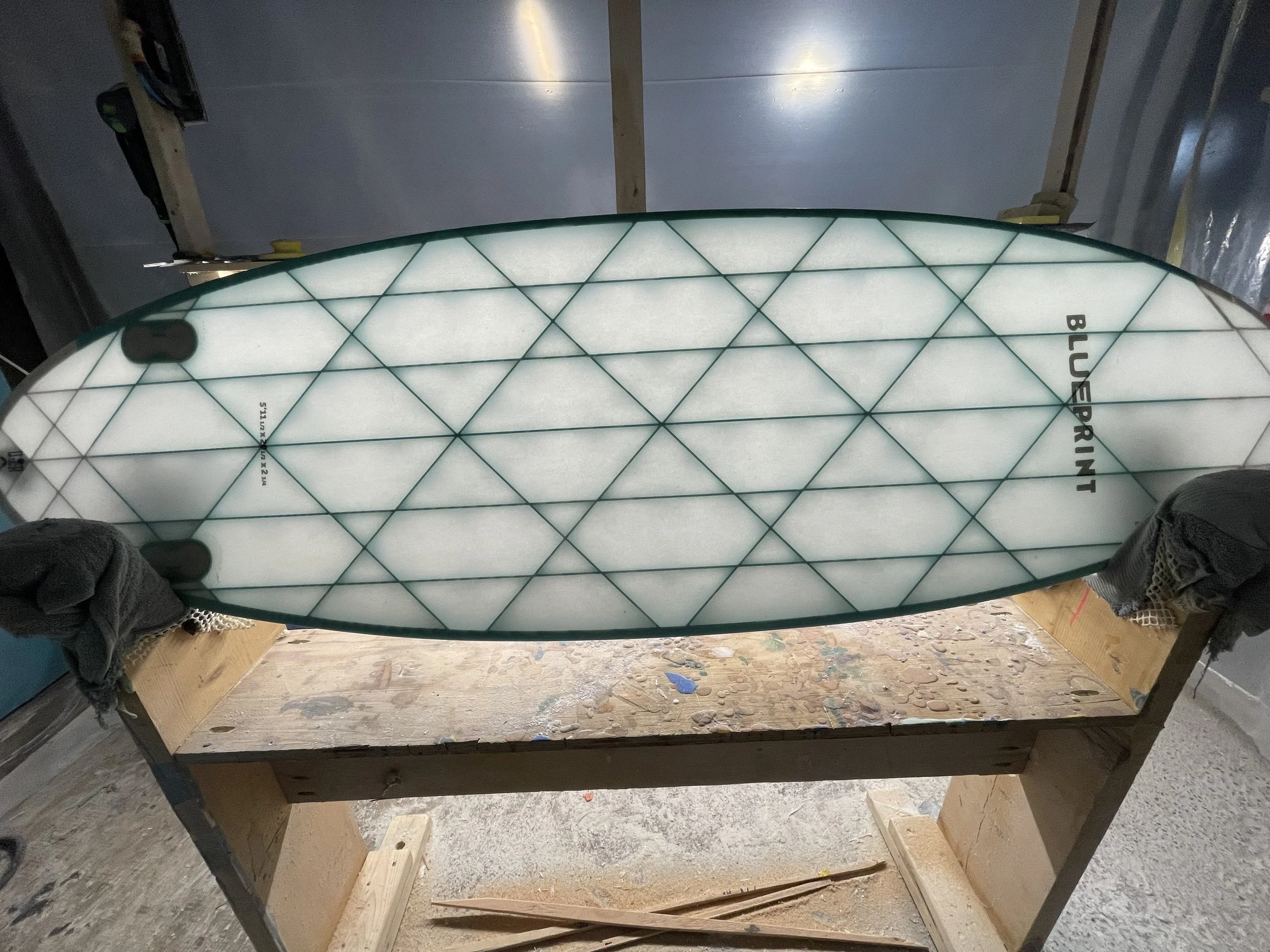
The Intersection of Technique and Technology
-
3D Printed Core
Shapers joke privately about how few surfers surf with enough power to feel a board flex. Surfers bicker over flex patterns as though they’re competing for a WSL spot next year. So why do most surfboard cores look so similar? Do they all start as foam blanks from the same overseas suppliers?
At Blueprint Surf, we saw the core of the board as an opportunity to find unprecedented performance characteristics that you can see and feel. We add more longitudinal stringers to increase stiffness. For big surfers and big waves, we make beefy boards. We add diagonal stringers to produce what we call “dynamic concave”. When a board with diagonal stringers flexes, the rails curl down like a Pringle and create a single concave on the bottom. By our math, this will add an extra little burst of speed coming out of your bottom turn.
All this, and we haven’t even started testing our weirdest ideas yet.
-
Top Secret Composite Skin
Some say the list of materials we use in our composite skin was hidden at the home of a US President. Others say Mike found our recipe washed ashore inside an old plastic bottle.
In truth, we tested dozens of fabrics, weaves, an weights before finding a combination that wouldn’t sag or drip into our board. We settled on a combination of high quality fiberglass and one layer of (CENSORED). And once we found the magic ingredients, it took another year for us to learn the techniques to make it work consistently, without resorting to super toxic, super fast, sun-cure resin.
We offer our skin in 3 different weights, so you can prioritize durability or shredability. The lightest skin does not come with our 1 year warranty.
The 4 Steps to Making Our Boards
3D-printing
By utilizing a 3D printer to “shape” our boards, we ensure precision and consistency in each product. This cutting-edge method allows us to create lightweight yet durable cores customized to meet different surfers' specific needs. With the ability to quickly iterate and test new designs, we can push the boundaries of performance and quality in our surfboards. By harnessing the power of 3D printing, we are shaping the future of surfboard manufacturing at Blueprint Surf Co.
The core is printed using recycled plastics on our 6-foot-long 3D printer at the Roux Institute in Portland, ME.
Preparing board for glassing
Once the boards are printed, we bring them into the workshop to prepare them for the next step - glassing. Since 3D prints are created layer by layer, it's important to blend these layers together. Besides that, we also sand the boards to help the epoxy resin bond better with the plastic core.
First composite layer
Our innovative approach to crafting surfboards involves a closely guarded secret - the base layer technique. This technique employs a composite material to set the foundation for the board's construction. The specialized base layer creates a smooth surface that enables the subsequent fiberglassing process to occur seamlessly and consistently, resulting in a high-quality and durable surfboard.
Glassing
After we apply the first layer, and then we move on to using traditional fiberglassing techniques. We use bio-based epoxy for sustainability and worker health and safety. After applying the hot coat, we carefully sand the surface to achieve a smooth and refined finish. We follow meticulous craftsmanship during each step of the process, this ensures that every surfboard we produce at Blueprint Surf Co. meets our high standards of quality and environmental responsibility.



